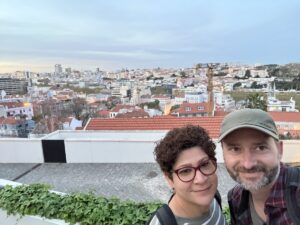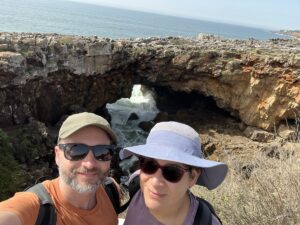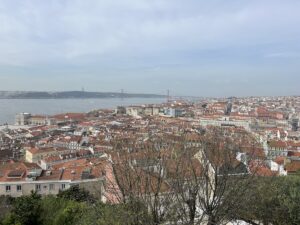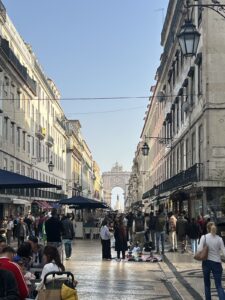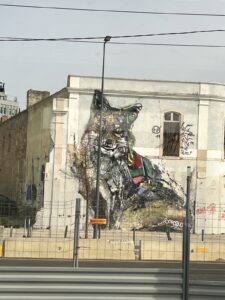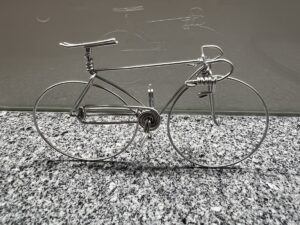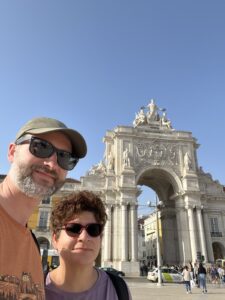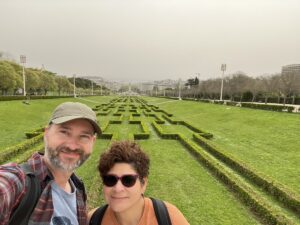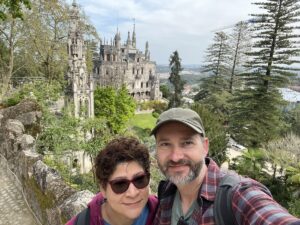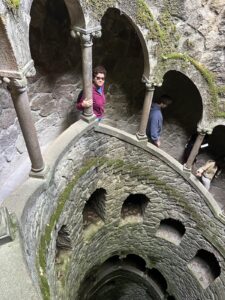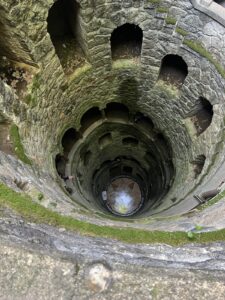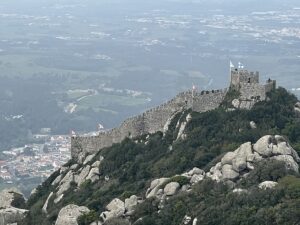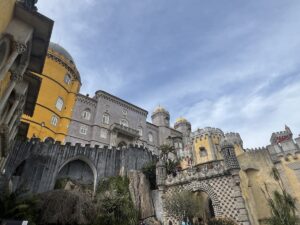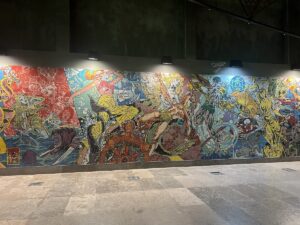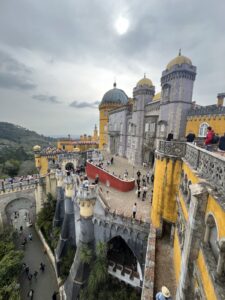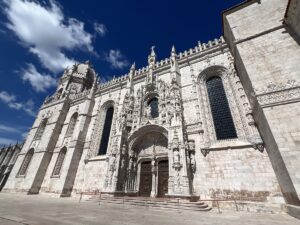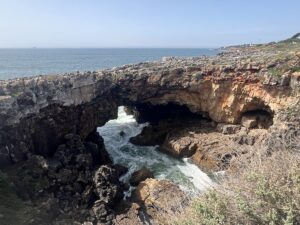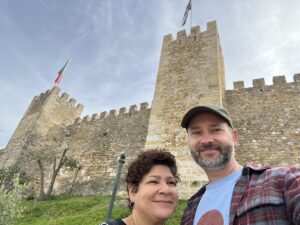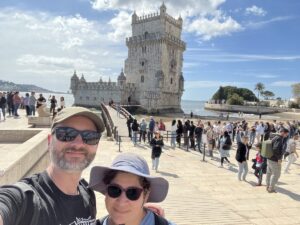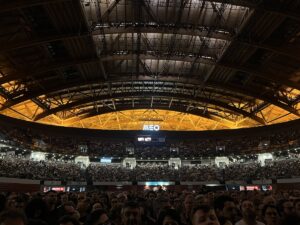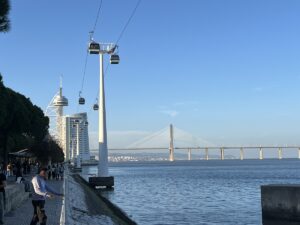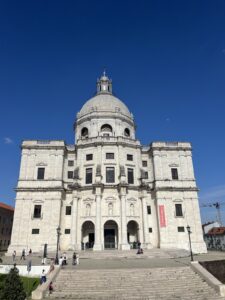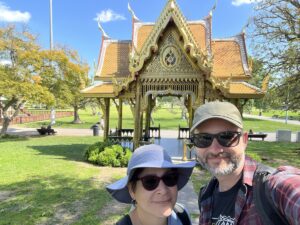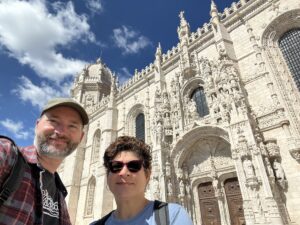There are many transportation options to travel from Braga to Lisboa — bus, train, plane, or drive. We decided to drive despite the 28€ in tolls each way. We average 50€ in tolls each month but I don’t mind because the toll freeways are well maintained and very low traffic except when going through a big city during rush hour. Even then I have yet to experience total gridlock or prolonged stop-n-go situations. Makes for a rather pleasant driving experience.
Our AirBnb for the week included a parking spot and was a short bus ride to the Metro (subway) or to train stations. Public transit in Lisboa is excellent – buses, Metro, trains, street cars – very easy to get to all parts of the city as well as nearby cities for day trips. Add in some Bolt/Uber rides and we didn’t use our car at all which was the plan.
The easiest way to use the transit system is with a Navegante card. However, it took us a few days to figure out the nuances of how it worked. There are two types of fares – day passes and zap (pay-as-you-go). Once you load 1 fare type on to the card, as long as the card has a balance, it is locked into that fare type. We ended up with 2 cards each, 1 for each fare type and used the card that made sense based on what we had planned for the day.
Once settled into our accommodations, we hit up LX Factory, and first impression was “am I in Portland?” An old warehouse district converted into restaurants, bars, including a rooftop bar, and walkways lined with local artisan stalls selling crafts. We enjoyed octopus tacos — first time, feeling a bit adventurous — very good. We finished the evening walking around the Bairro Alto and Principe Real neighborhoods — great views of the city and a nice spot to take in a sunset.
The following day, we hopped a train to Cascais. A nice little beach town that historically was a summer get-a-away for the nobility. Alot of the old estates are well preserved and some are in the process of being restored to their former beauty. One of the highlights for me was Boca do Inferno – a natural bridge along the coast where the waves crash under the bridge and into a little inlet. The Count of Castro Guimarães Palace looked like something out of a fairy tale. Parque de Palmela, an urban park, featuring lots of walking paths, ponds with ducks and turtles, and open grass fields for picnics. Quite the place to relax and get lost with your inner thoughts.
After the Cascais day, we did a city walk-about, exploring more parts of the Portuguese capitol. We visited Castelo de Sao Jorge, the National Pantheon, and stumbled upon a vintage street market. One of my favorite things about travel is not the planned itinerary and the “must-see” places, but what you discover along the way. The vintage market, known as the Mercado de Santa Clara, happens every Tuesday and Saturday. The American Pickers would have a blast here 🙂 One of the streets of the market has a beautiful tile mural along a retaining wall.
For dinner we had one of my favorite experiences of the trip. There are a network of “illegal”, clandestine Chinese restaurants in Lisboa. No signage, hidden in the 1st floor (which is 2nd floor to those not familiar with the European numbering system) of what looks like a typical old Portuguese building that could be residential, commercial, or mixed use. When we went upstairs to the restaurant, I was a bit hesitant for the dining room was run down and the bathrooms were covered in graffiti as if the place housed squatters at some point. However, everything seemed fairly clean. In Portugal, you learn to not judge a book by its cover, so we stayed and ordered. Totally blown away — best Chinese food we have had in quite some time.
That night we went to the Depeche Mode concert at the Meo Arena located in the Parque de las Naciones neighborhood. Strikingly different from the rest of Lisboa because it is modern — full of high-rises, glass facade buildings, and wide streets. We thoroughly enjoyed the concert but I think I am getting too old for floor seats 🙂 Sure, it was amazing to be about 20 feet from the band, but from now on, we will get lower tier seats instead of being right in the middle of the action. And the cell phones. Sure, I take my phone out 2 or 3 times throughout the 2.5 hour performance and snap a quick photo, but so many people literally record the entire show. And I don’t know why because it is shit audio and shit video and they probably realize it after the fact and end up deleting it anyways. I’m not sure how you put a stop to it but it is out of control and super distracting and annoying for the rest of us. Rant over, let’s get back to more Lisboa adventures 🙂
Next up, we took a bus to Belém for a day trip. Belém is known as the museum district. We checkout out the Jeronimos Monastery, Torre de Belem, the Padrão dos Descobrimentos (monument to the discoverers/explorers), and the Monument to the Combatants of the Portuguese Colonial War. The Combatants Monument is guarded by two soldiers who do a choreographed march around it every hour or so. We decided to ride a street car, instead of the bus, back to the city center. The ride started out nice until the driver stopped the car and started honking the horn. Turns out, there was a van parked along the street that stuck out too far, not allowing enough room for the street car to pass. We had nowhere urgent to be so we figured we would wait it out. But after nearly 30 minutes, my patience ran out and we ordered a Bolt. While we waited for our ride, a tow truck arrived to tow the van — we call this experience street car snafu 🙂
Back in the city center, it was lunch time so we stopped off at the popular Time Out Market. In Lisboa, there are touristy areas and not-so-touristy areas. This was a total tourist shit show 🙂 Over-crowded, you literally had to fight to get a seat anywhere. We had a donut for a quick snack and bailed to have some Thai curry at a nearby restaurant — much more chill vibe.
The subsequent day also rated high on the tourist meter, but I felt like we couldn’t come to Lisboa without visiting the majestic mountain village of Sintra. Because of its altitude and micro-climate, Sintra stays much cooler than Lisboa. As a result, during the time of the monoarchy, the nobility would escape the heat of Lisboa during summer to stay in their Sintra palaces. Some of these palaces are open to the public to walk the vast gardens of the estate and tour the inside of the buildings. There is also a castle from the times when the Moors ruled the land. So from a historical standpoint, Sintra is a very interesting place to visit. However, it does feel like the Disneyland of Portugal in my opinion. The crowds everywhere can become quite overwhelming and mind you this is not even peak season yet.
After Sinta, we felt ready for another city exploration day. We first stopped off at Avenida da Liberdade, one of the main streets in the city, lined with large walkways, even larger trees, and luxury shops. The street ends at a 3-lane roundabout with the Marques de Pombal monument in the center. Located just north of the roundabout is Parque Eduardo VII and Estufa Fria. Estufa Fria translates to cold greenhouse which means it is an open air greenhouse with a slatted roof to temper the sun or the cold. It is a wonderful botanical garden. We ate lunch at Mercado de Campo de Ourique which is a food court market like Time Out but much better in my opinion as well as more of a local spot.
Our final day in Lisboa included another train ride day trip. This one to the town of Setúbal which we considered as our landing spot when we moved to Portugal before finally deciding on Braga. Setúbal has a local feel, a working marina full of fishing boats instead of a marina like Cascais that is full of luxury sailboats and yachts. The city center area is flat and very walkable in contrast to the super hilly Lisboa. I’m not saying Setúbal can compete with Lisboa, but it does feel like a nice place to live and still have easy access to everyhing the capitol city has to offer.
Well that’s all for our first visit to Lisboa. I’m sure we will be back.

